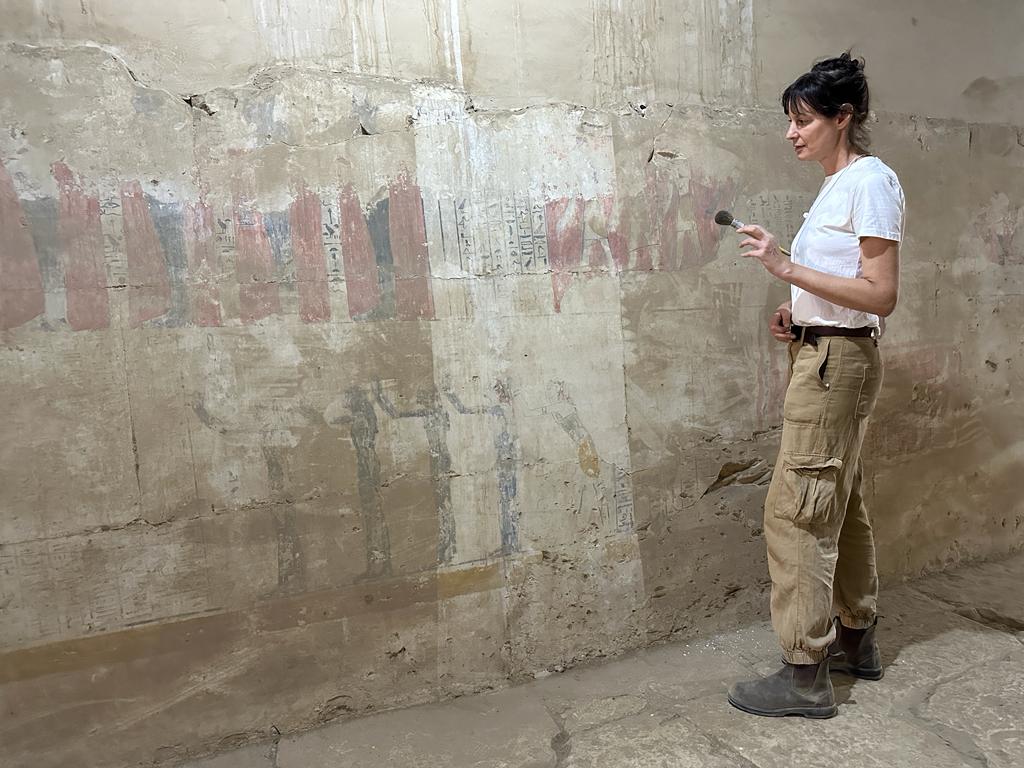Towards the end of last year, I undertook a conservation condition assessment for the American Research Centre in Egypt, supported by the World Monuments Fund at the Merenptah Tunnel of the Osireion at Abydos. A truly unique monument.
The assessment went towards the formulation of a conservation treatment plan for the monument. The Tunnel, which leads into the main body of the Osireion, was originally, like the rest of the Osireion, a subterranean structure, before excavation in the early twentieth century. It is cut into the Esna shale of the area, and constructed from limestone and sandstone blocks. The decoration is both painted – secco on a fine plaster ground, and carved, with scenes depicting the afterlife.
The aim of this assessment was to make an initial condition assessment of the surfaces within the tunnel, characterizing the surviving original materials, the layer structures, and stability, and identify the principle deterioration factors and mechanisms. A series of small treatment tests were also carried out on the painted surfaces. This information was used to formulate an initial conservation treatment proposal for the surfaces within the tunnel.
Before a programme of remedial conservation work can be undertaken it is key to first understand the environmental conditions of the tunnel – from which actions can be undertaken to stabilise and control the overall conditions within it – the most fundamental step for the long-term survival of the decoration.
The initial step of this work is therefore the environmental assessment. This will be followed by a first season of conservation work which will start to directly stabilise the elements within the tunnel – the detaching paint and plaster layers and the stone substrate – to prevent further loss of original material.
Eventually once stability, both of the elements and the environment, has been achieved work can start to address the reading and interpretation of the decoration of this fascinating monument, much of which is currently almost illegible as well as extremely fragile.


The view down the tunnel showing the current condition, and more detail, of the extremely fragile surfaces currently covered in a heavy dust layer.
